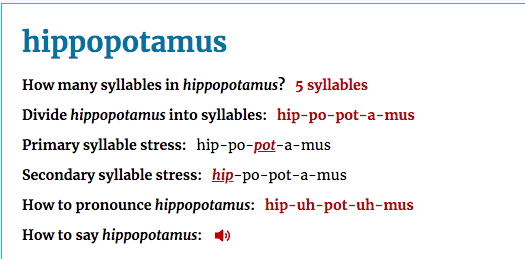There’s no doubt about it – teaching syllables is an important part of reading instruction. After all, this skill shows up in primary grade level standards – regardless of where you teach. But how do you get your students to understand what syllables are, and what are the best ways to practice syllabication once it is introduced?
First, let’s dive into why it’s a benefit to young readers to understand syllables. From there, we will offer some suggestions for strategies and resources teachers can use to make teaching syllables a breeze!

Why do kids need to understand syllables?
When younger kids can hear the different sounds and syllables in words, they will have the foundation to be able to chunk apart and blend together sounds and word parts as beginning readers.
As children progress through grade levels, having a strong understanding of how words are broken into syllables can help them decode, pronounce, and spell longer words. In fact, did you know that over 80% of English words have two or more syllables! So, having a strategy for how to chunk multisyllabic words into single syllables is much more efficient than trying to sound out a long string of letters.
How to Teach Syllables
First, explain what syllables are
Basically, a syllable is a single vowel sound in a word. This can be confusing for kids because they will want to count the number of vowels they see in a written word. This will take some practice, but it is important to help kids understand that syllables are not single vowels; they are single vowel sounds. Try demonstrating this with a word like “beautiful”. There are five vowels, but when you listen closely, there are three vowel sounds.
- beau
- ti
- ful
Another way to explain is by calling syllables “beats” in words. Try clapping the syllables in students’ names and in names of objects around the classroom. Have students join in as they get more comfortable! Take this one step further and sort the people and objects into groups by the number of syllables.

Tip
Try putting your hand under your chin to count the number of syllables in words. The number of times your chin drops when you’re saying a word is the number of syllables the word has.
Try it! How many times does your chin touch your hand when you say the word ‘banana’? Your chin should have dropped three times – ‘ba-na-na’. This works because your mouth has to change positions to form a new vowel sound (aka syllable), causing your chin to drop.
Finally, kids will love this video explaining syllables:
Examples of Syllables
Here’s a free site called “How Many Syllables” where you can type a word and it will tell you how many syllables, how to divide the word into syllables, and what the primary and secondary syllables are (to help with pronunciation).

4 Strategies for Teaching Syllables
1- Count Syllables
Practicing syllable counting can be simple! Call out the number of syllables in names when dismissing kids to line up for lunch, “If your first name has three syllables, line up.” Or, send kids to their literacy center by telling them to hop for each syllable in their name. “Jess-i-ca, syllable hop on over to the writing center”.
2- Teach Younger Students to Segment by Syllables
When you notice a student struggling to read a longer word, cover up all but the first syllable. Once they sound out the first syllable, reveal the next syllable to sound out, then have them put the two syllables together. Learn more about reading strategies to use with young readers.
3- Teach Older Students Syllable Division
- Look at the word. Mark the vowels.
- Determine which syllable division rule (VC/CV, V/CV, VC/V, or V/V) applies.
- Cut or mark the word accordingly.
- Read the word.
4- Practice Syllables With Poetry
Haikus
Haikus are fun to write! Kids can get creative and write about any topic, but the poem must be three lines long:
- 1st line – 5 syllables
- 2nd line – 7 syllables
- 3rd line – 5 syllables
Limericks
Limericks are also a form of poetry that requires syllable counting!
- They are five lines long.
- Lines 1, 2, and 5 rhyme with one another.
- Lines 3 and 4 rhyme with each other.
- They have a distinctive rhythm (based on number of syllables)
- They are usually funny.
This site has excellent directions for how to write a limerick.

Teaching Syllables in Kindergarten & 1st Grade
Check out this resource for your youngest learners.
Phonological Awareness Toothy

Get This Resource
It’s the Toothy® you know and love, with a twist! This phonological awareness resource includes 45 sets of phonological and phonemic awareness skills. It includes early, basic, and advanced phonological awareness activity sets. Toothy® task kits are highly engaging task card games that allow students to practice skills by answering questions in a fun, motivating way.
Teaching Syllables in 2nd & 3rd Grade
The next level of syllable practice includes working with multisyllable words.
Multisyllabic Words Toothy Pack
Kids get to play the Toothy game while focusing on syllable types and decoding multisyllabic words:
- Counting Syllables
- Closed Syllables / CVC
- Multisyllabic CVCe Words
- Open Syllables
- Two-Syllable Long Vowel Words
- Final Stable Syllables

All Access member? Download Multsyllabic Words Toothy Pack FREE here.
Get This Resource







Interesting